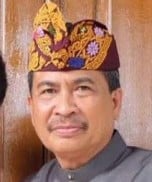Lecturer in the Architecture Study Program of the Faculty of Engineering, Udayana University, born on May 2, 1961 in Denpasar, Bali. Elementary to high school education was completed in Jakarta (1968-1981). Bachelor of Engineering (S1) was completed in the Department of Architecture, Faculty of Engineering, Udayana University in 1988 and was appointed as a lecturer in the same department since 1991.
In 1995, he received a BPPS scholarship to continue his Master's degree and obtained a Masters in Architecture-Settlement in the Postgraduate Program, FTSP-ITS Surabaya in 1997. He completed his Cultural Studies S3 at the Udayana University Postgraduate Program and obtained his Doctorate degree in 2012. He once served as Assistant Dean III of the Faculty of Engineering, Udayana University, 2003-2007 period.
Aside from actively teaching in the Architecture Undergraduate Program, the Master of Architecture Program and the Doctoral Engineering Study Program at the Faculty of Engineering at Udayana University, he currently also serves as the Head of the Balinese Traditional Architecture Laboratory at the Architecture Study Program at the Faculty of Engineering, Udayana University.
Nothing was added yet.








Enable comment auto-refresher